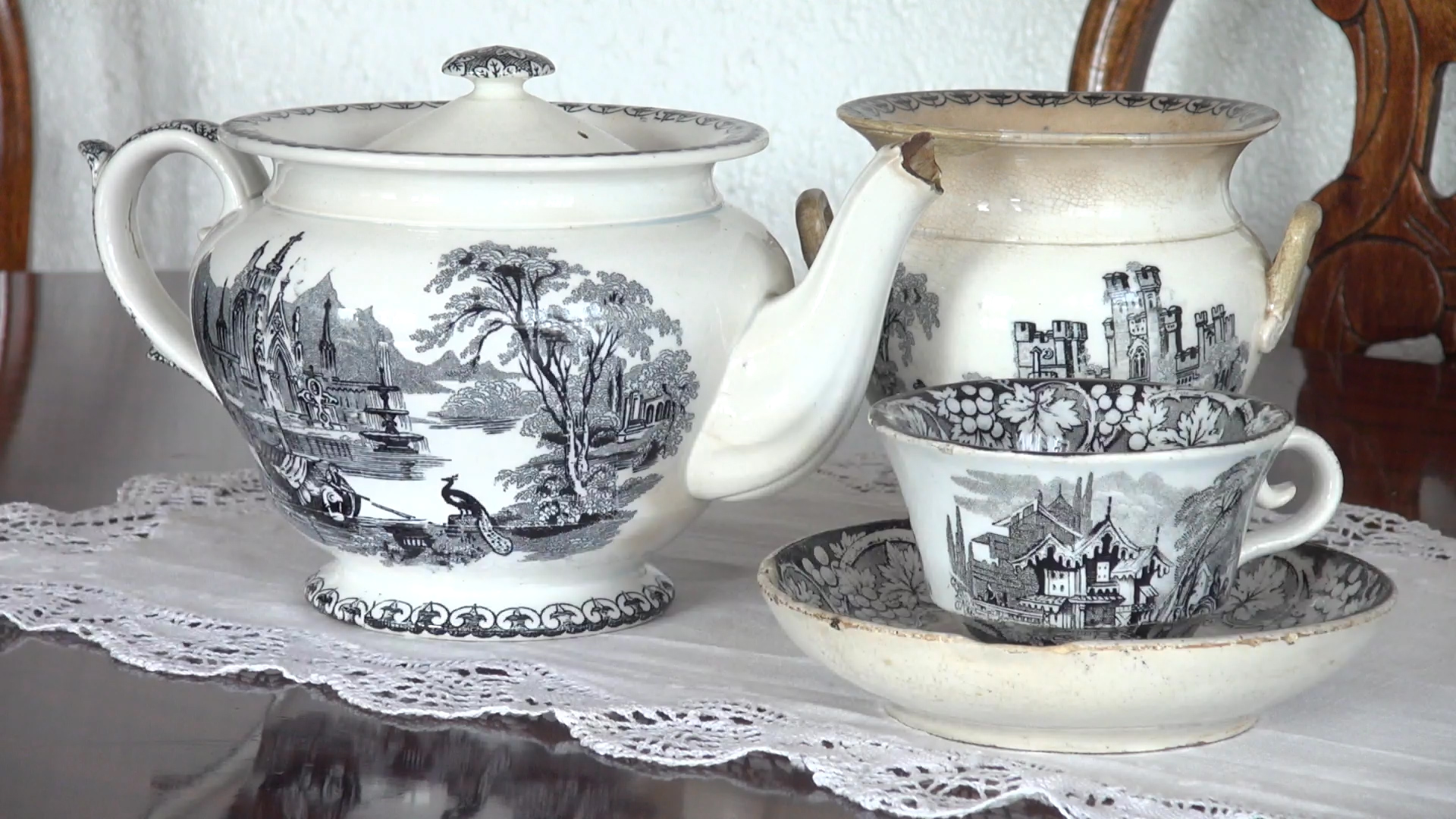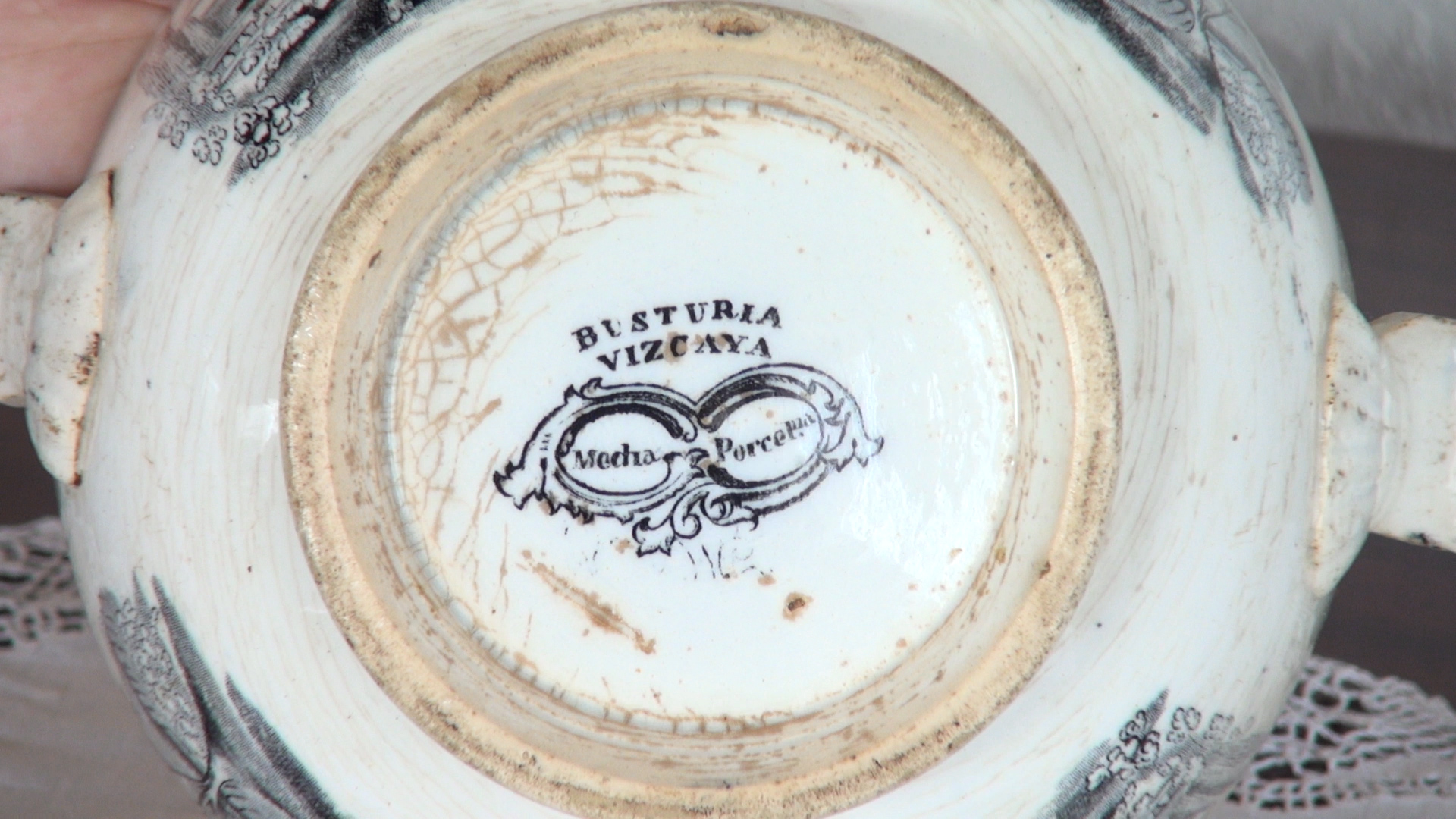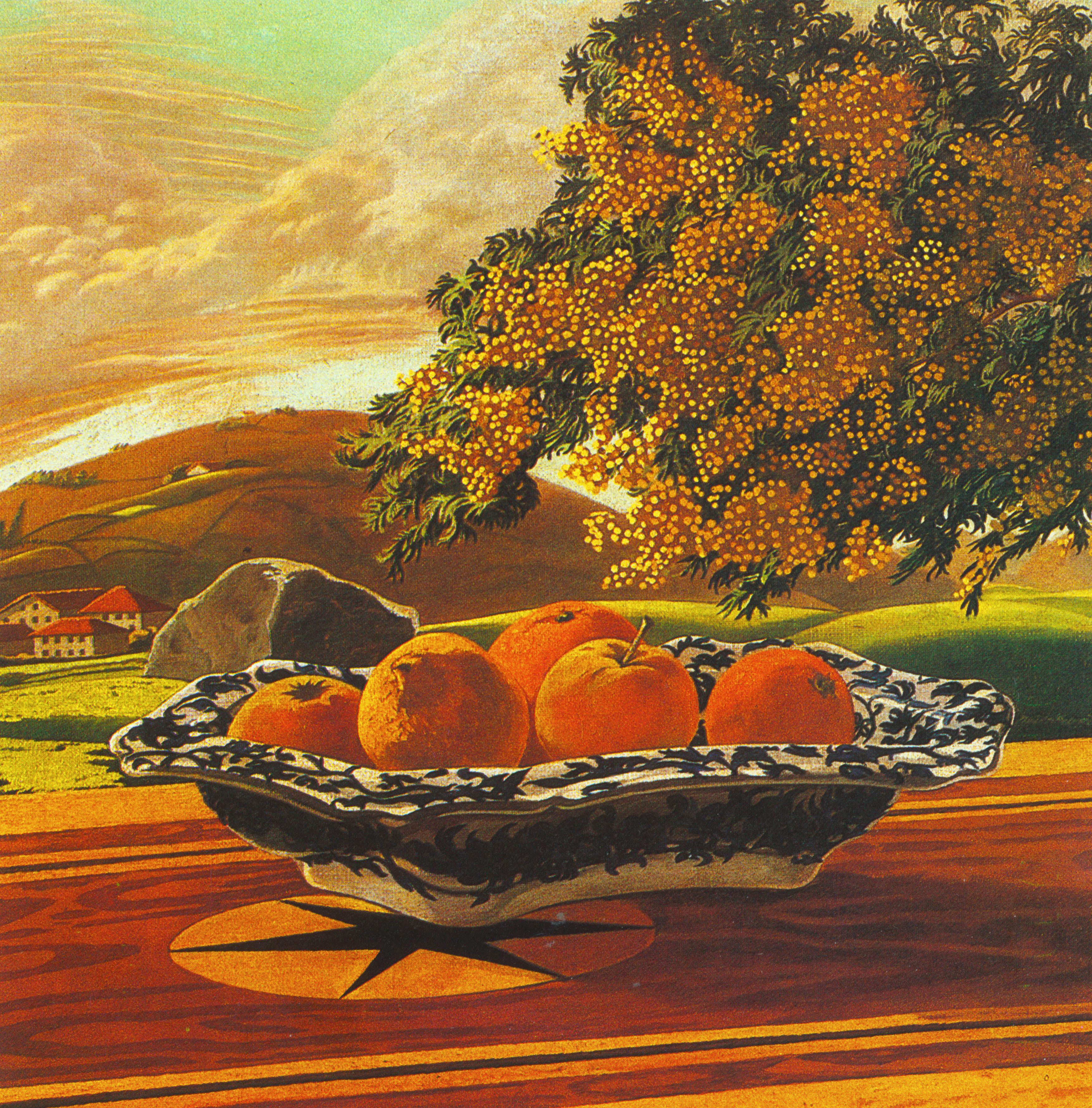Basque ethnography at a glance

Set of ceramics from Busturia. Labayru Fundazioa Photographic Archive.
St Mammes Ceramics in Busturia appears to have operated for barely a couple of decades, approximately from 1842 to 1862, and still remains largely unknown. It was erected on the ruins of an ancient tile factory in the neighbourhood of Axpe, on the right bank of the Urdaibai estuary opposite Kanala, on the site where the house known as Villa Matilde stands today.
The tile factory where bricks, tiles and traditional ceramics used to be manufactured was renovated and more exclusive items the new bourgeoisie demanded started to be crafted: fine ceramics and semi-porcelains displayed at large stately homes to suit the social status of their owners.

The Busturia mark. Labayru Fundazioa Photographic Archive.
Three families from Busturia were involved in the founding of the factory: the Uriartes, the Bulucuas and the Chirapozus. All three belonged to the local aristocracy, their wealth coming from the exploitation of traditional industrial resources such as ironworks, mills, tile factories…, and other businesses in America. They received financial help from Ambrosio Orbegozo, native to Bilbao and one of the future founders of the Bank of Bilbao.
The majority of workers were from Busturia and its immediate vicinity; some apprentices and assistants came from the House of Mercy in Bilbao; and French technicians, Margaine and later Decaen, highly skilled and knowledgeable of the new production and printing techniques, were placed at the forefront.

Still life by José María Ucelay. Illustration from La cerámica de Busturia.
Foremost among the articles crafted were dishes and dishware, very much like the wares produced in national potteries of the time. Some of them were white, others were hand coloured, but it was the mechanization of the printing process and the resulting reduction in costs that was really innovative about this pottery. A large portion of the items preserved to this day are decorated with ornamental patterns typical to Busturia ceramics: scenes of muleteers framed by vine leaves, and cobalt blue parsley leaves.
St Mammes Ceramics had its own mark to certify the origin of their ware. Besides, the initials of individual commissioners were sometimes impressed.
Finally, we cannot fail to mention the Basque painter José María Ucelay, who had such strong ties to the factory in Busturia the ceramics manufactured there inspired countless still lifes, and in the case of his portraits, figured prominently.
Akaitze Kamiruaga – Popular Cultural Heritage Department – Labayru Fundazioa
Translated by Jaione Bilbao – Ethnography Department – Labayru Fundazioa
Further information may be obtained from an audiovisual produced by Labayru Fundazioa for Busturia Council in 2017 titled Busturi, ipuinetakoa dirudi [Busturia, land of wonders]. The book La cerámica de Busturia [Ceramic wares from Busturia] by Kosme Barañano and Javier González de Durana published by the Provincial Government of Bizkaia in 1987 may also serve as reference.
Furthermore, an exemplary selection of Busturia ceramic wares is displayed in the permanent exhibition the Basque Museum in Bilbao hosts.

